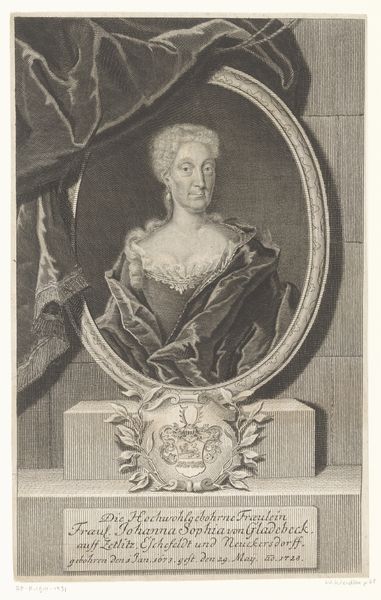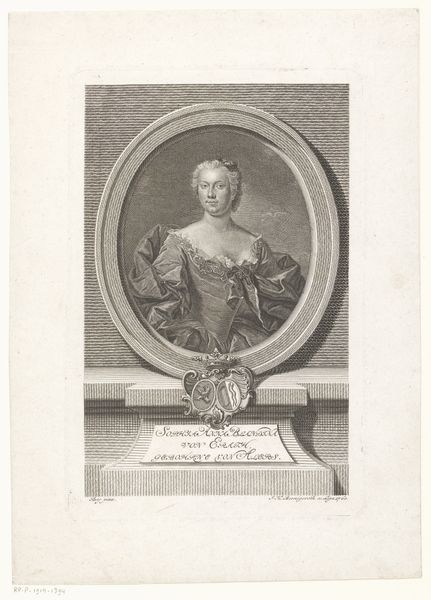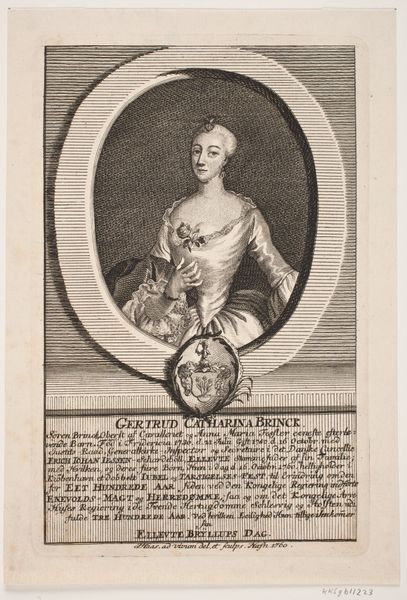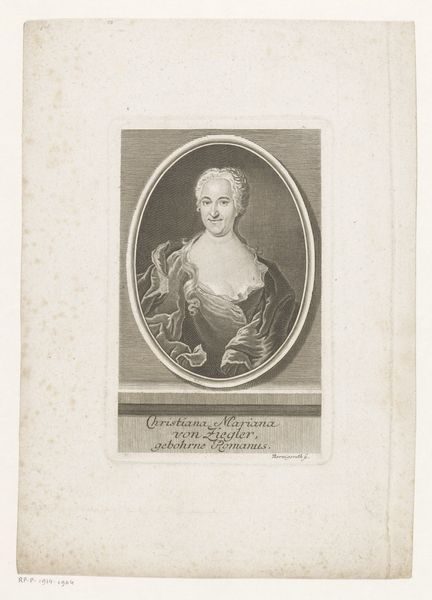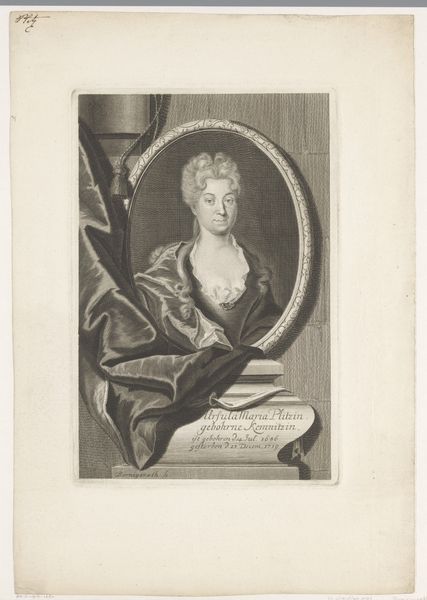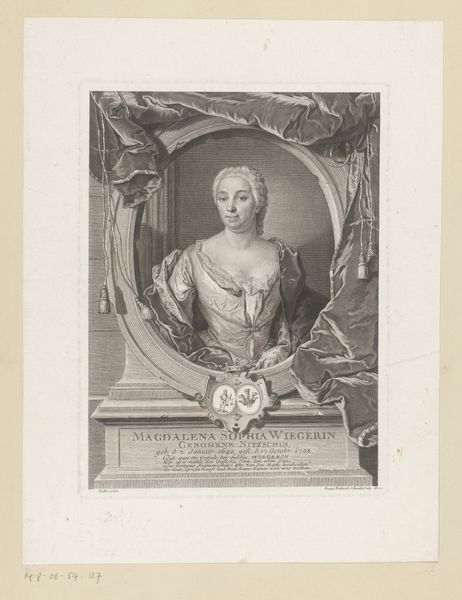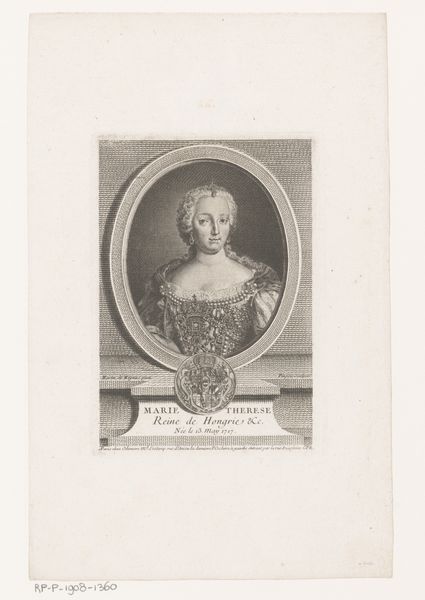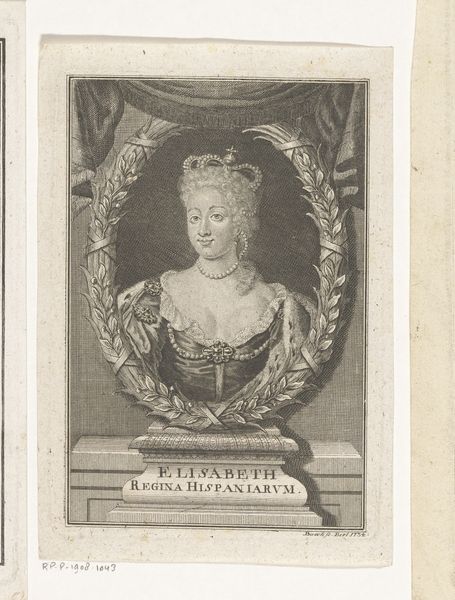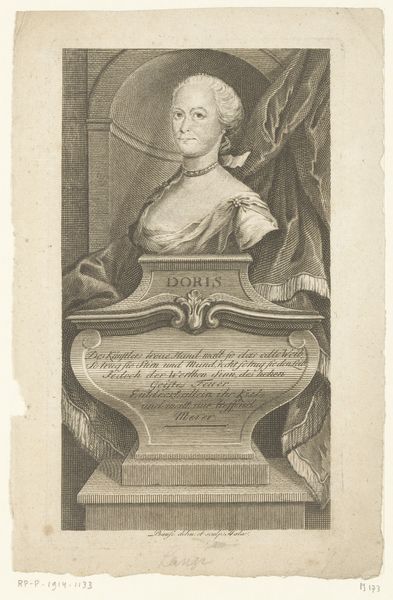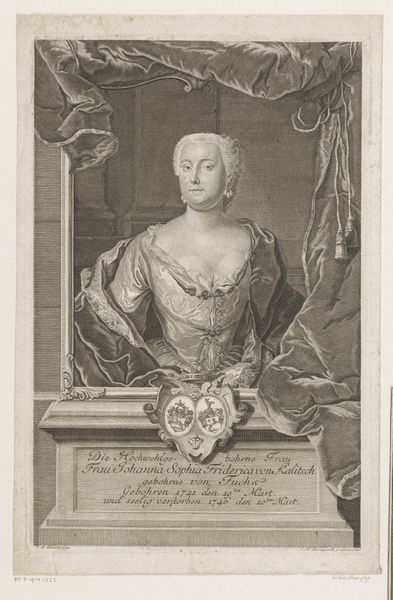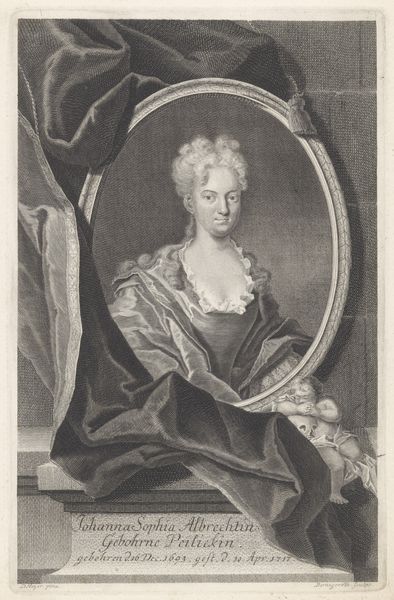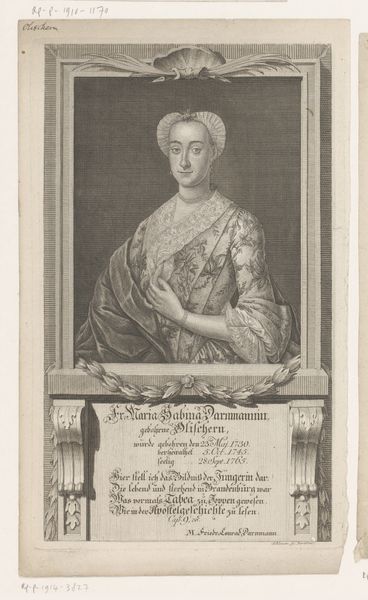
print, intaglio, engraving
#
portrait
#
baroque
# print
#
intaglio
#
old engraving style
#
caricature
#
pencil drawing
#
history-painting
#
engraving
Dimensions: height 203 mm, width 150 mm
Copyright: Rijks Museum: Open Domain
Curator: Looking at this engraving from 1745, "Portret van Maria Dorothea Pertsch," we see the Baroque love of detail, rendered meticulously by Johann Martin Bernigeroth. What’s your immediate take? Editor: Well, initially it feels...reserved. Not cold, but contained. The oval frame emphasizes her, but almost like she's deliberately separate, observing. It’s a very formal era, I know, but the texture, the stark monochrome – it gives off an air of controlled presence. Curator: Precisely! Baroque portraiture, particularly in printmaking, served as a statement. The oval, that's not merely decorative. The circle symbolizes completeness, eternity. Placing Maria Dorothea within it suggests her lasting significance. Think about the allegorical weight, portraying her as an almost timeless figure. Editor: I get that sense of permanence. And there's a curious contrast, too. Look at the detail in the fabric – it feels so opulent. You can almost hear the rustle of silk, imagine its weight. It feels much warmer and more dynamic than the face itself. Curator: That dynamism you observe is key. Baroque wasn't simply about visual splendor; it was about emotional impact. The drapery, the cascading folds, amplify her status but also act as a theatrical element. This wasn’t just a likeness; it was a curated representation of identity. Her family name is etched directly onto the stone plaque at the base – no room for interpretation there! Editor: Yes, there is no sense of spontaneity about it, which also has a kind of allure. What stays with me is the almost photographic quality, rendered with such incredible precision in monochrome. There's a kind of emotional distance too which is captivating. It’s like she knows she's becoming a historical artefact, right at that moment. Curator: It’s an excellent point. The print anticipates posterity. These images were intended to circulate, embedding her image into the collective memory. Bernigeroth wasn't simply capturing a face but enshrining a legacy through symbolic visual language. Editor: It feels like encountering a ghost, yet that "ghost" is saying: Remember me. Remember my family. And in some way, centuries later, we do. Curator: A remarkable testament to the power of symbolic portraiture.
Comments
No comments
Be the first to comment and join the conversation on the ultimate creative platform.
